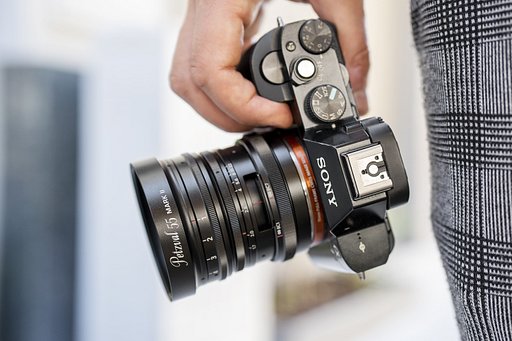Fuji Instax 210 WIDE vs Diana Instant Back+
6 20Both Fuji Instax 210 and Diana Instant Back+ deliver the signature soft polaroid look, but the handling of these two cannot be more different. Come find out more!
Fuji Instax 210 Wide vs Diana Instant Back+
I love instant photography. That look on people’s face, as images and colors slowly appear in front of their eyes like magic. Recently, I had the pleasure of testing out the Fuji Instax 210 and the Diana Instant Back+, before travelling with them overseas. So how do they compare?

Fuji Instax 210 WIDE: the Easy-going Workhorse
At the first glance, Fuji Instax 210 is the wider and heavier of the two. With smooth round edges and solid color, it looks like a product from the era when cell phones the size of a water bottle were first introduced. As you power it up and the actually lens extends out of the body, making it even bigger than a regular SLR. This is because it has to accommodate the cartridge for the 8.6×10.8cm Instax Wide film, which is 2 times bigger than the Instax mini one. To better illustrate this, the Instax mini looks like a credit card, whereas the Instax WIDE is the size of a wallet. (Note1)
For multi-camera long-distance travelers, equipment does add up and load is an important factor in considering which camera to take. (Note 2) For portraits, I don’t mind sliding those cute little Instax mini into my wallet. But when shooting landscapes (especially mountains), I found the Instax WIDE more satisfying. Interestingly, the viewfinder of Instax 210 protrudes out of the body (presumably to stay clear of the film pack). Therefore, you better get used to compose with your left eye.
When you are constantly on the go and your head is preoccupied, this Fuji Instax 210 operates like a dream, delivering reliable results for most situations. Being semi-automatic, this camera does almost everything for you, from lens cap removal, to light metering, to automatic flash, to polaroid ejection (yes, that means no double exposure). All you need to decide is the focal range, be it 3m-infinity or 0.9-3m. For macro shots of subjects 0.4m away, you’d need to add a “close-up lens” in front of the main camera lens and look for that small loop-on-a-stick to help adjusting for parallax. For self-portraits, there is a tiny mirror on this close-up lens to get yourself into the frame. A word of advice: it’s really easy to accidentally knock this close-up lens thingy off the camera. Hook it to your pinky, etc.

Although this all-in-one-box polaroid camera is decidedly point-and-shoot, with little room for adaptation, Fuji does let you slightly lighten or darken the picture at will (+/- 2/3 EV). This feature, however, won’t be sufficient to bring out the details when the sun is setting and the scenery is getting too dark for the ISO800 Instax film. With the Flash button, you can force the flash to fill-in back-lite subjects less than 3m away. Unfortunately, there is no hot shoe on the Instax 210. If you must throw in some extra colors, you can always put color gels in front of that 1cm x 1 inch built-in flash.
Diana Instant Back+: the Diva
Instant Back+ or not, Diana will always be a diva. With the Instant Back+, the Diana effectively doubles its body thickness without adding on much weigh (which makes it very comparable to the ubiquitous Instax 100 mini popular with Asian teenagers). For indoor and back-lite subjects, insert a flash. (Note 3)
Still an all-manual Diana at heart, this instant camera offers the same versatility that makes the plastic queen a firm Lomo favorite. Fisheye, telephoto, double exposure, long exposure, color splash, whatever artistic bend you crave for, the Instant Back+ lets you do it instantly. With some imagination and a bit of soldering, you can even supersize it! (See the link below)
During home testing, the Instant Diana was as wild and as fun as it can be. But things are a little different, when I used it in parties and on trips abroad, following that “Don’t think just shoot” Golden rule. For instant, when I was oxygen-deprived up in the Himalayas flirting with high-altitude sickness, manual operation of the Diana Instant Back+ turned into a long and expensive trial-and-error experiment. Things that I managed to forgot to do before/after opening the shutter included:
a) take off the cap,
b) eject the protective “Do not press here” black plastic sheet after film loading,
c) adjust the focus,
d) adjust the aperture,
e) double check that the aperture is not at “Pinhole”,
f) eject the film → accidental doubles!

Overblown close-ups
One common issue that bugs both of these instant cameras (and many other) is the use of flash during close-ups. For indoor self-portraits or subjects less than an arm’s length away, it is rather easy to overexpose the polaroids, burning a dark green hole in the middle of the picture with a big white halo. For the Diana Instant Back+, this can be easily addressed by setting the aperture to “Sunny” (smallest). For the Instax 210, I tried reducing the exposure by using the “D/darken” mode but to no avail. It doesn’t let you turn off the flash either. Blocking the flash with my index finger helped a little but the photo is still overexposed (especially compared to my iPhone capture!). Perhaps we’d need to tape it with something a semi-opaque.

In conclusion, this really is between a point-and-shoot and an all-manual camera. The Fuji Instax is a simple one-trick pony, a reliable workhorse that gets the job done! The Instax’s WIDE film is perfect for landscapes. The Diana Instant Back+, on the other hand, is a wild diva waiting to be tamed. She needs attention. A lot of it. Pick Diana when you feel creative and like to fiddle with all her buttons.
Horses for courses. Choose your instant beast wisely!
Notes:-
1) The Instax 210’s heavy build and sturdy construction do offer some protection. I dropped mine on carpeted floor once and it survived.
2) My Fuji Instax 210 may or may not have repeatedly triggered the X-ray metal alarm at airport security checks, when I put it in my carry-on bag.
3) The Diana Instant Back+, however, is not compatible with the Lomography RING-flash. There’s just not enough space under the Diana camera body to fit both accessories.

For more comparison between Instax WIDE and instax mini films: try this article by nina_ska
For more on my polaroid project Give-A-Photo: Tibet
For more on my polaroid project Give-A-Photo: India:
For more on my Giant Diana Halloween costume costume
written by ihave2pillows on 2013-04-18 #gear #people #review #fuji-instax-210-wide-polaroids-diana-instant-back-camera-review






























































6 Comments